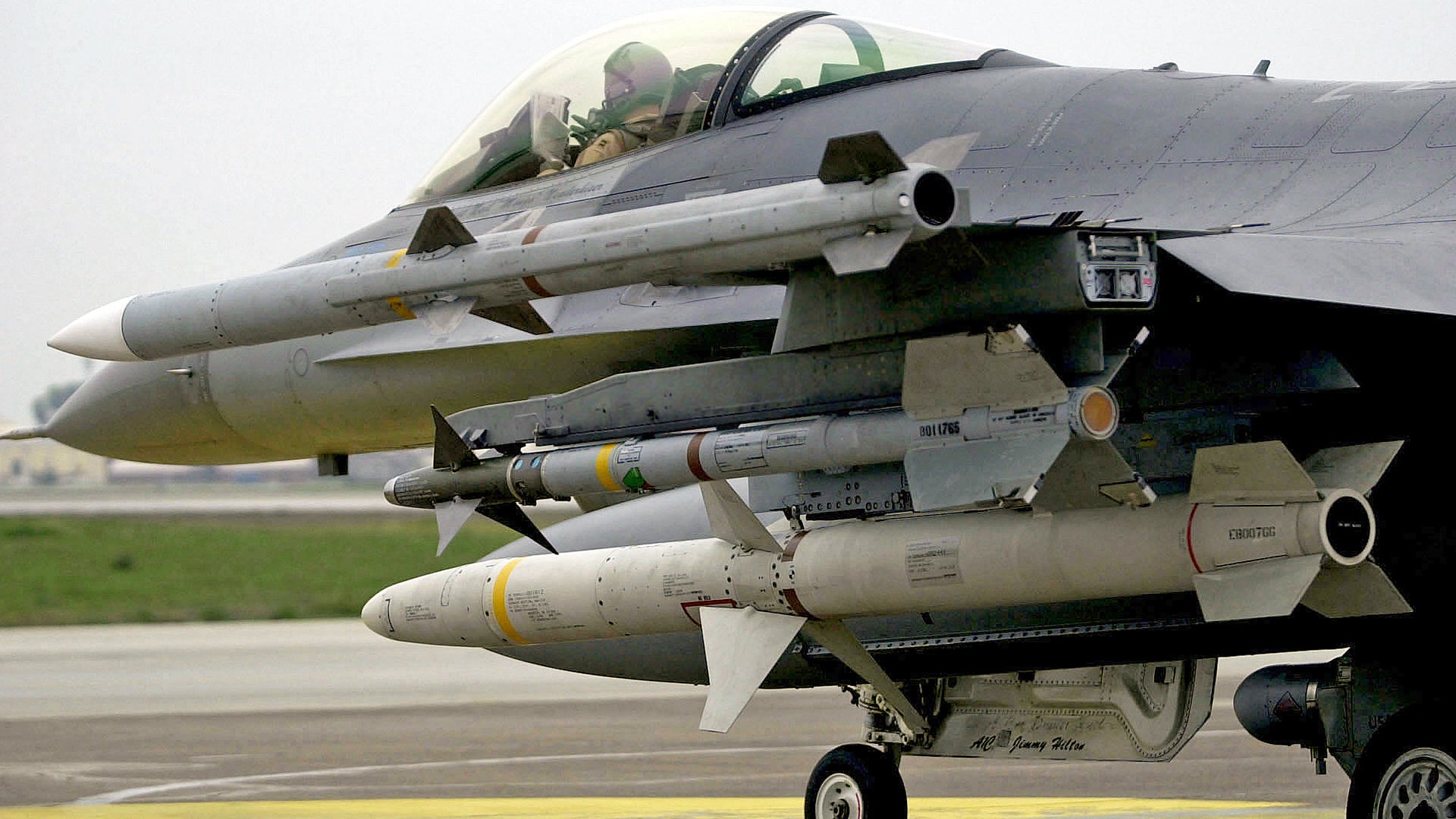We recently posted a story about U.S. Air Force F-16Cs flying a long-range counter-air patrol mission into the South China Sea while fully armed with air-to-air missiles. The unusual weapons configuration, with five AIM-120 AMRAAMs on wingtip rails and underwing stores pylons and one AIM-9 Sidewinder underwing, as well, spurred a flurry of very familiar questions that I have gotten repeatedly for a decade: Why do F-16s carry AIM-120 AMRAAMs on their wingtip rails almost exclusively, instead of AIM-9 Sidewinders? I thought it was time to settle this once and for all with an answer straight from the F-16’s manufacturer, Lockheed Martin.
The AIM-9 was carried on the Viper’s wingtip rails for well over the first decade and a half of F-16 operations. After the AIM-120, introduced in the early 1990s, proliferated throughout the USAF’s F-16 fleet, the Sidewinders largely moved onto the outer underwing stations. Even today, with the advanced AIM-9X and its high-off-boresight targeting ability, the Sidewinder is still largely mounted under the Viper’s wings. Some have even mentioned this may impact the missile’s ability to lock up targets far off the jet’s centerline, but that doesn’t seem to be a major concern for the USAF.
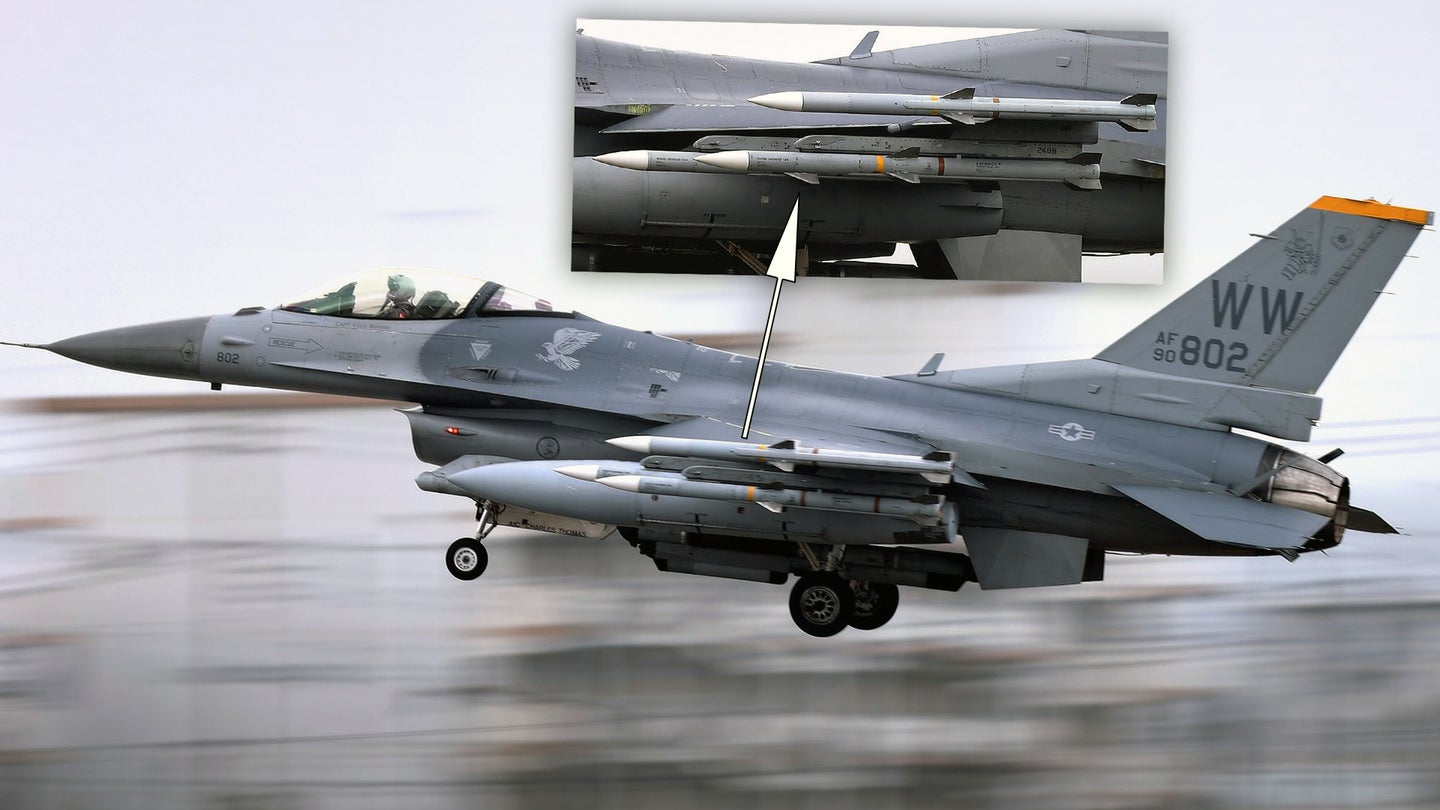
There have been various explanations given in forums and on social media for the near-omnipresence of the AIM-120s on the Viper’s wingtip rails, even during training where air-to-air combat isn’t the focus. These have included issues with the missiles themselves, as well as the idea that the AIM-120s act similar to winglets, offering the F-16 better efficiency when they are mounted. Another common explanation is that this configuration cuts down on wing flutter.
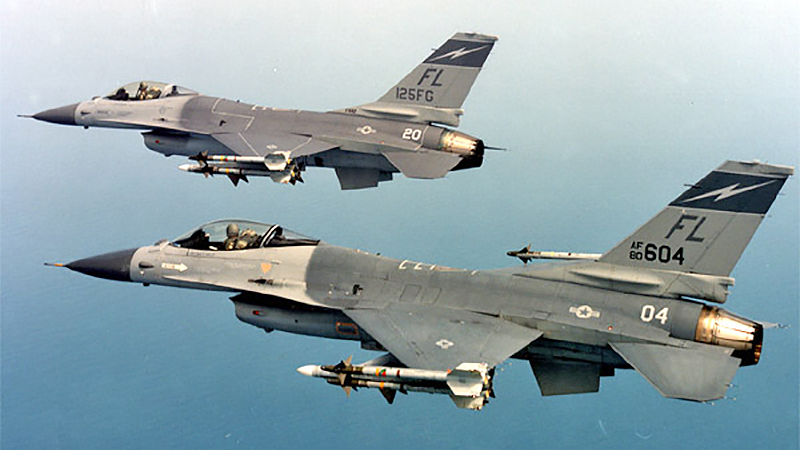
Wing flutter is defined as “a dynamic instability of a flight vehicle associated with the interaction of aerodynamic, elastic, and inertial forces (aeroelastic phenomena).” Flutter has airframe fatigue and even performance impacts in particular areas of the flight envelope and can be minor to catastrophic in nature. If you have ever seen an armed F-16 taxi by you in person, the AIM-120s on the wingtips certainly bounce around, almost to a comical degree.
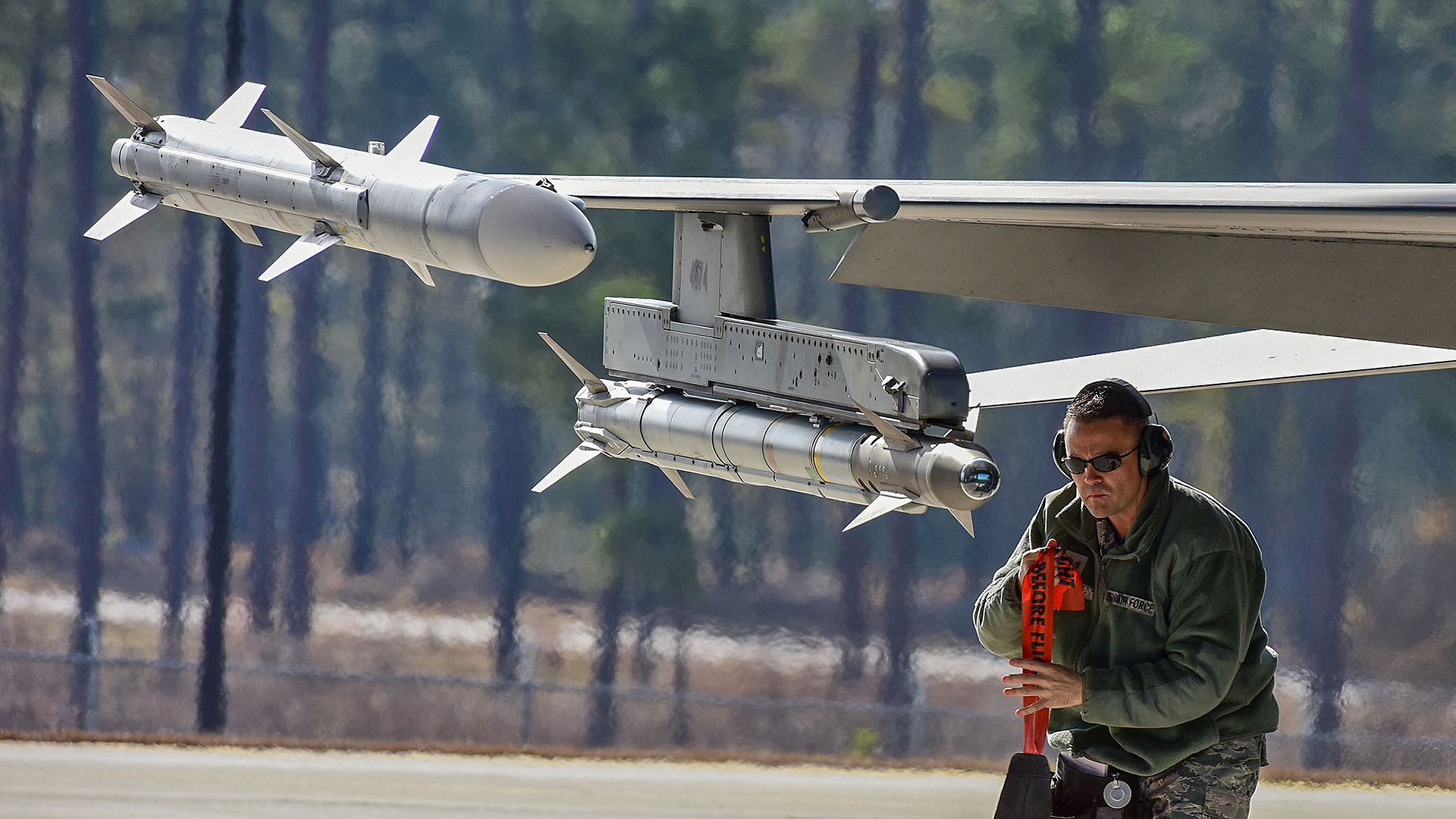
With all this in mind, I asked Lockheed Martin directly about this for a definitive answer. Here is their response:
The F-16 is able to carry different missiles on multiple stations at the same time, such as the AIM-120 and AIM-9. Because of that capability, the AIM-120 is positioned on the wingtip to reduce wing flutter, while still ensuring mission performance.
So, the wing flutter explanation is indeed the right one. This would explain why most F-16s fly with AIM-120 captive training rounds, which weigh 335 pounds, just like their live counterparts, on their wingtips regardless of the training situation.
Some air arms that fly the F-16 are not cleared to purchase the active radar homing AIM-120, such as Iraq and Egypt. So, these aircraft are often seen flying with AIM-9s, which weigh about half as much as an AIM-120, on their wingtip rails, as the semi-active radar homing AIM-7 Sparrow that they are allowed to buy is not capable of being mounted there.
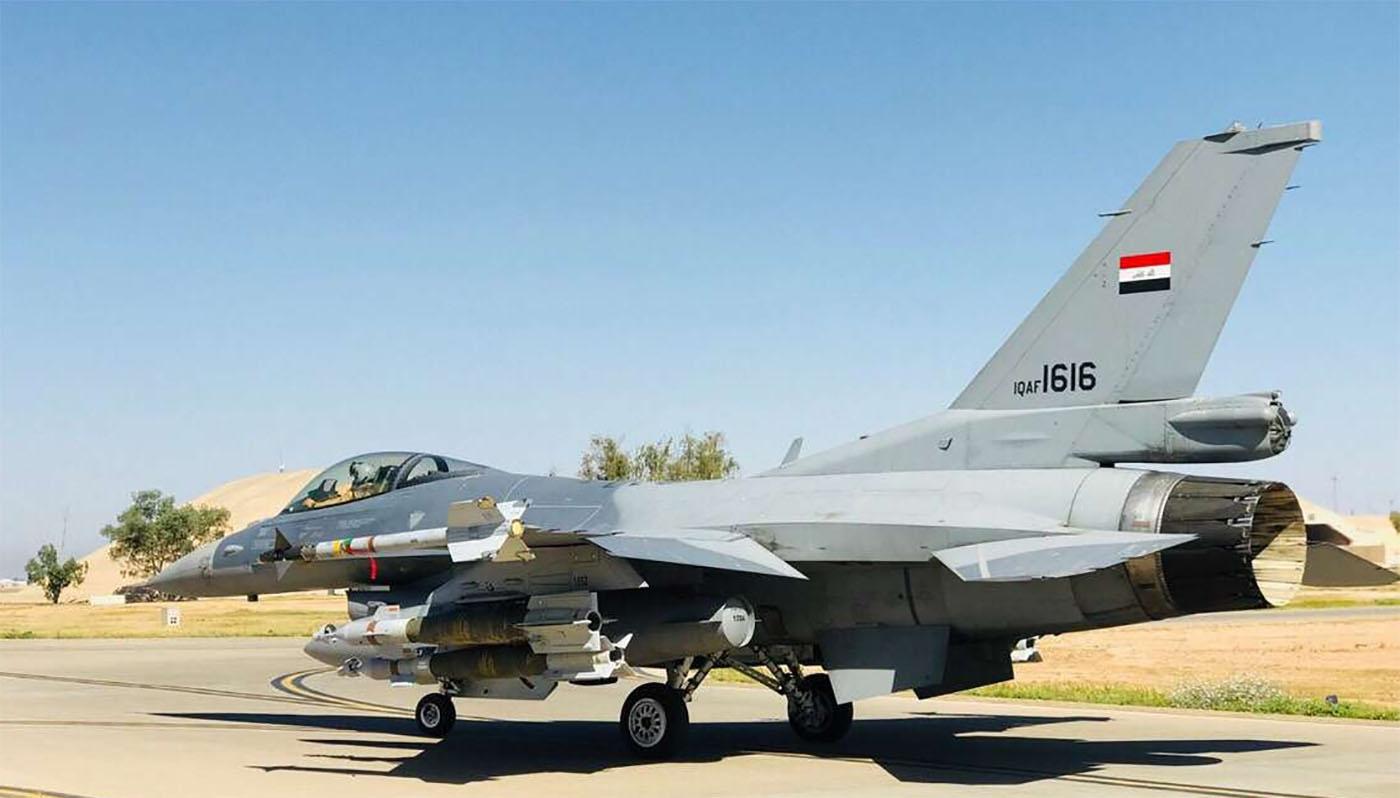
With over 4,600 F-16s delivered to air forces around the globe, roughly half of which are still flying, the F-16 has been studied incredibly closely over the decades and evolved accordingly. This includes insights into wing flutter, including with different stores configurations, and their impact on performance and airframe life. In fact, these studies continue to this very day:

Thomas ‘t-b0ne’ Richter (@b0neyt on Twitter), who spent his career in the military flying Marine F/A-18s, before transitioning to the Michigan Air National Guard to fly F-16s, gave The War Zone a pilot’s perspective on the issue:
The AMRAAM is primarily a beyond-visual-range weapon, and would most likely be off-the-rails before entering the merge and turning with an adversary in a within-visual-range dogfight scenario. In which case, having the moment arm of a bit heavier (than an AIM-9) AIM-120 on the wingtips would affect performance.
Still, it was not anything I specifically recall making a big deal about in any tactics briefing. Going further with regard to the flying characteristics when carrying AIM-120s vs AIM-9 on the tips, the Viper is a beast, and in my opinion, if you’re ripping the hell out of it in a BFM encounter, you’re not noticing if the roll rate is so many degrees per second slower or faster, you are trusting your skill, and the jet, to maneuver to the control zone of the hostile for the kill.
But it really is more about wing flutter than anything else. Our loadout for Operation Iraqi Freedom in 2004 was all air-to-ground (laser-guided bombs and JDAM), yet look at our wingtips. Most certainly, the odds of an air-to-air encounter over Iraq were very low. The configuration was largely to keep the flutter in check and the remote air-to-air contingency capability was a bonus.

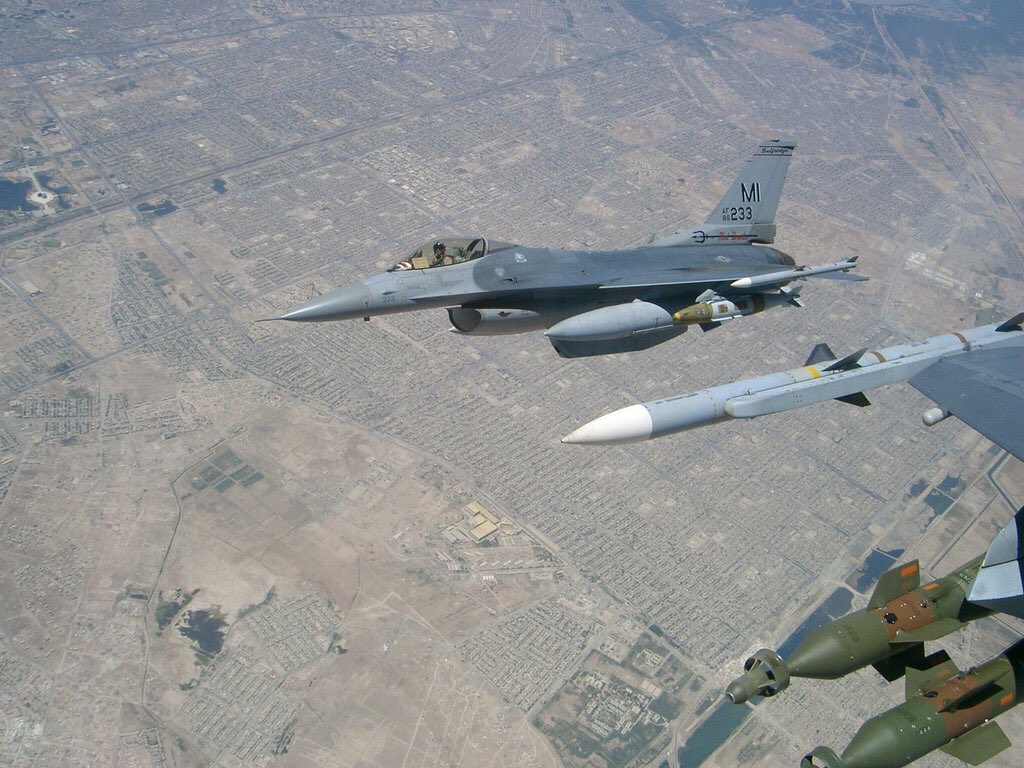
Considering the USAF sees its newest F-16s—the last of which was delivered 16 years ago—flying for decades to come in upgraded form, as do many other air arms around the globe, getting the most out of the airframes and their life-extending structural enhancements will be key. Flying with AIM-120s on their wingtips appears to be part of this solution.
Beyond the existing fleets of F-16s, the fourth-generation fighters remain in remarkably high demand, with the relatively new South Carolina production line set to remain in good shape for years to come. With the acquisition of the F-15EX and a possible push for a far more affordable, lower-end aircraft than the F-35, it is not outside the realm of possibility that the U.S. Air Force could once again order more F-16s in their new standardized production configuration.
Regardless, at least we finally know now for certain why most F-16s spend most of their time in the air with ‘Slammers’ hanging off their wingtips.
Contact the author: Tyler@thedrive.com
